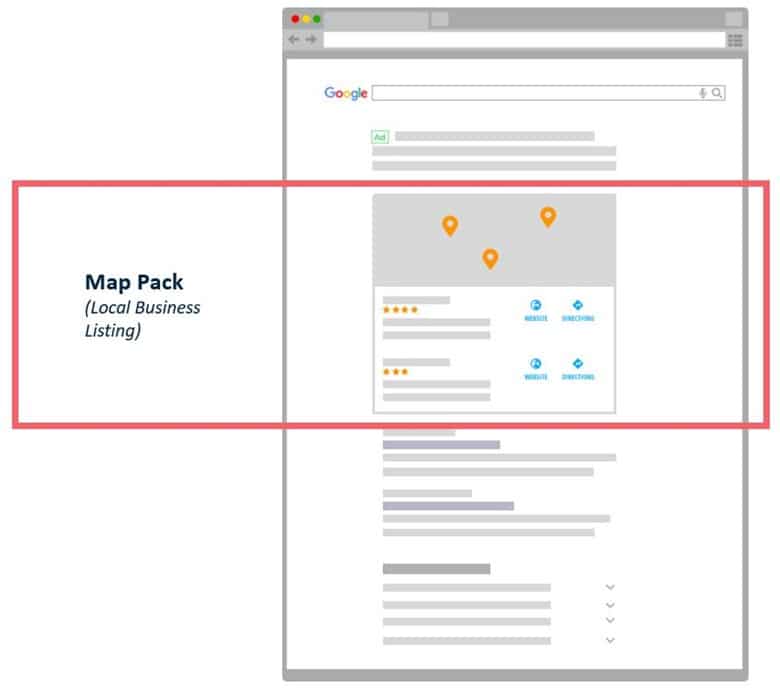How to Stay Competitive Online
There are three kinds of Google Business (GB) profiles in the medical space: practice, department, and practitioner profiles. How you manage them can significantly affect how those profiles rank in a Google search. This Ask Fuel First question can help you maximize your visibility and hold onto all of your patient reviews: How should I structure my Google Business Profiles, and where should I send reviews?
The Importance of Ratings and Reviews
Ratings and reviews are a direct reflection of the patient experience. They’re also major decision-making factors (Inc., 2022), only topped by insurance and practice location.
People trust the experiences of others, and in today’s choice-driven economy, reviews are one of the easier ways to narrow down their selection and make what feels like a more informed choice.
Between 2020 and 2021, a BrightLocal consumer survey (Inc., 2022) recorded an 18% year-over-year increase in participants who agreed they use Google to evaluate local businesses, totaling 81% of those surveyed in 2021. Consumers are putting all their trust into Google’s proverbial search basket – and it’s always easier for a business to meet the consumers where they already are. Google uses the language in user reviews to help determine search rankings in the MAP Pack of a Google search. The MAP Pack is what displays in Google’s search results when it believes a local, proximity based business listing is the best result to show the searcher

A profile with reviews that frequently mention “hearing aids” is more likely to display when a user searches for that term than a profile with reviews that don’t mention hearing aids at all. Frequency and specificity also matter because it can be more difficult for a general practice to rank well against specialized competitors for specialized key terms. For example, an ENT practice profile may have more hearing-related reviews than a neighboring hearing aid center, but it also has ENT and allergy reviews on its profile. A hearing aid center has nothing but hearing-related reviews. Even if it has fewer than the neighboring ENT practice, only having hearing-related reviews can help it outrank the neighboring ENT practice’s profile.
Diluting A Google Business Profile
Now you know why ratings and reviews matter ⎯ consumers care and Google cares. Google is much more likely to show consumers your profiles when you actively collect reviews. As we already know, it’s not just a numbers game. Getting the right reviews to the right Google Business (GB) profile matters. So, here’s how you can royally bungle it up.
1. Compete against your own practitioner’s profiles.
You have a limited number of patients willing to leave reviews. If you have too many GB profiles for them to choose from, you can very easily find yourself with many profiles that each have a small number of reviews. This method opens the door for competitors. They can funnel reviews into a single practice or departmental GB profile to increase their ranking instead of spreading reviews around.
2. Lose practitioners and their reviews.
Losing reviews from a departing physician can seriously affect a practice’s ability to rank for specific terms. If you depend on a specialty practitioner GB profile to bring in business, and that profile has a lot of reviews mentioning that specialty and its features, what happens if that practitioner leaves or retires?
“Reviews from a practitioner cannot be migrated to a practice’s profile,” says Randi Gibbons, Google Business specialist at Fuel Medical Group. “They will essentially just disappear.” That means all the key terms in reviews that helped the practitioners’ GB profile rank and brought in new patients for the practice will disappear, too.
What Are My Options?
Practice Profiles Only
This is the most common option for businesses to pursue. Practice-only profiles work best when there are limited competitors in specialty spaces, or the practice focuses on a specific area of expertise, like an ENT or audiology-only practice. Certain complementary services, like allergy, also perform well as part of an ENT practice.
Practice and Practitioner Profiles
Most practices will have some practitioner profiles because practitioners often make them independently of the practice. These practitioner profiles only become troublesome when there are so many they become challenging to manage or siphon reviews from primary or departmental profiles. Remember, as long as you’ve got a practitioner biography on your website and their outside directory profiles include your practice address, Google will connect those practitioners to your practice. When following these best practices, there is very little danger of a searcher inputting a practitioner name and seeing a result that isn’t your practice.
Practice and Departmental Profiles
Not every practice needs departmental listings. Departmental listings are redundant if a practice specializes in just one area, like a hearing center. If a multi-specialty practice doesn’t have specialty competitors in the area, departmental profiles may also be redundant. When specialty practices are in the area, and a multi-specialty practice creates departmental profiles, they can collect specialty-specific reviews under their department profiles. This method makes it easier for multi-specialty practices to compete against specialty competitors in Google’s MAP search.
What’s Best for Your Practice?
It’s important to remember the following if you choose a practice or practice and departmental first approach to patient reviews:
- Reviews on your GB practice and department profiles remain, even after certain practitioners leave or retire.
- You’re more likely to find new patients who are comfortable accepting care from any of your practitioners if they discover positive patient reviews mentioning your entire office or specialty department.
- Encourage practitioner reviews to help your staff craft their own successful path, but don’t rely solely on them in place of comprehensive practice and departmental reviews.
That’s why Gibbons says it’s important to ask yourself the following when deciding on practice versus practitioner reviews:
- How long has the doctor or medical practitioner been with your practice?
- Are they someone who plans on sticking around for at least a couple of years?
- When someone departs, are your practice’s GB profiles ranking in the MAP search for their specialty services already, or do they take that ranking and your future patients with them?
Ultimately, it’s up to you whether to direct review gathering efforts towards individual provider reviews or set things up to be practice-oriented. But remember this: the more positive reviews your practice has, the more likely you are to show up in the MAP search and in front of someone just discovering your practice for the first time.
If you need help growing reviews, your web provider may have a review-generating platform that can simplify and automate the review-gathering process.


